|
|
General: TURQUIA (ESTAMBUL SOBRE 7 COLINAS)
Elegir otro panel de mensajes |
|
|
Seven hills of Istanbul
From Wikipedia, the free encyclopedia
Istanbul is known as the City on the Seven Hills (Turkish: Yedi tepeli şehir). The city has inherited this denomination from Byzantine Constantinople which - consciously following the model of Rome - was built on seven hills too.
[edit] The seven hills of Istanbul

Map of Byzantine Constantinople with the hills names in brown
The seven hills, all located in the area within the walls, first appeared when the valleys of the Golden Horn and the Bosphorus were opened up during the Secondary and Tertiary periods. In the Ottoman Age, as in the earlier Byzantine period, each hill was surmounted by monumental religious buildings (churches under the Byzantines, imperial mosques under the Ottomans).
The first hill on which the ancient city of Byzantium was founded, begins from Seraglio Point and extends over the whole area containing Hagia Sophia, the Sultan Ahmed Mosque and Topkapı Palace.
On the second hill are to be found the Nuruosmaniye Mosque, Grand Bazaar and Column of Constantine. The second hill is divided from the first by a fairly deep valley running from Babiali on the east Eminönü.
The third hill is now occupied by the main buildings of Istanbul University, the Bayezid II Mosque to the south and the Süleymaniye Mosque to the north. The southern slopes of the hill descend to Kumkapi and Langa.
The fourth hill on which stood the Church of the Holy Apostles and, subsequently, the Fatih Mosque, slopes down rather steeply to the Golden Horn on the north and, rather more gently, to Aksaray on the south.
On the fifth hill we find the Mosque of Sultan Selim. The fifth and the sixth hills are separated by the valley running down on the west to Balat on the shore of the Golden Horn.
On the sixth hill are to be found the districts of Edirnekapı and Ayvansaray. Its gentle slopes run out beyond the line of the defense walls.
The seventh hill, known in Byzantine times as the Xērolophos (Greek: ξηρόλοφος), or "dry hill," it extends from Aksaray to the Theodosian Walls and the Marmara. It is a broad hill with three summits producing a triangle with apices at Topkapı, Aksaray, and Yedikule.
|

ESTANBUL
ESTAN/ISHTAR
BUL/BULL/TORO
ESTANBUL ES UNA CIUDAD DE 7 COLINAS
Seven hills of Istanbul
From Wikipedia, the free encyclopedia
Istanbul is known as the City on the Seven Hills (Turkish: Yedi tepeli şehir). The city has inherited this denomination from Byzantine Constantinople which - consciously following the model of Rome - was built on seven hills too.
[edit] The seven hills of Istanbul

Map of Byzantine Constantinople with the hills names in brown
The seven hills, all located in the area within the walls, first appeared when the valleys of the Golden Horn and the Bosphorus were opened up during the Secondary and Tertiary periods. In the Ottoman Age, as in the earlier Byzantine period, each hill was surmounted by monumental religious buildings (churches under the Byzantines, imperial mosques under the Ottomans).
The first hill on which the ancient city of Byzantium was founded, begins from Seraglio Point and extends over the whole area containing Hagia Sophia, the Sultan Ahmed Mosque and Topkapı Palace.
On the second hill are to be found the Nuruosmaniye Mosque, Grand Bazaar and Column of Constantine. The second hill is divided from the first by a fairly deep valley running from Babiali on the east Eminönü.
The third hill is now occupied by the main buildings of Istanbul University, the Bayezid II Mosque to the south and the Süleymaniye Mosque to the north. The southern slopes of the hill descend to Kumkapi and Langa.
The fourth hill on which stood the Church of the Holy Apostles and, subsequently, the Fatih Mosque, slopes down rather steeply to the Golden Horn on the north and, rather more gently, to Aksaray on the south.
On the fifth hill we find the Mosque of Sultan Selim. The fifth and the sixth hills are separated by the valley running down on the west to Balat on the shore of the Golden Horn.
On the sixth hill are to be found the districts of Edirnekapı and Ayvansaray. Its gentle slopes run out beyond the line of the defense walls.
The seventh hill, known in Byzantine times as the Xērolophos (Greek: ξηρόλοφος), or "dry hill," it extends from Aksaray to the Theodosian Walls and the Marmara. It is a broad hill with three summits producing a triangle with apices at Topkapı, Aksaray, and Yedikule.
http://en.wikipedia.org/wiki/Seven_hills_of_Istanbul
|
|
|

luventicus.org
Ankara
596 × 375 - 12k - gif |
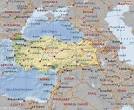
voyagesphotosmanu.com
Mapa geográfico de Turquía
575 × 470 - 111k - gif |

viajerosworld.blogspot...
Mapa de Turquia
991 × 642 - 84k - gif |

maps.mygeo.info
Mapa #10 (image/gif)
738 × 380 - 104k - gif |

atlasescolar.com.ar
Turquía
624 × 400 - 76k - gif |

permaculturemarin.org
mapa de turquia y grecia
600 × 371 - 42k - jpg |

whitey.net
Turquía Mapa (Lonely Planet).
400 × 300 - 44k - gif |

consuladodeturquiaenel...
Mapa División Política:
1031 × 599 - 118k - jpg |
|
|
|
|
|
|
|
|
FI=PHI=NUMERO DE ORO=1.618033
171. Salmos 45:9: Hijas de reyes están entre tus ilustres; Está la REINA a tu diestra con oro de Ofir.
SO-FI-A/SABIDURIA/S-OFI-A/FI-L-OFI-A
REINA VESTIDA CON ORO DE O-FI-R
201. Romanos 11:33: ¡Oh profundidad de las riquezas de la sabiduría y de la ciencia de Dios! ¡Cuán insondables son sus juicios, e inescrutables sus caminos!
| Rom 11:33 O the depth of the riches both of the wisdom and knowledge of God! how unsearchable are his judgments, and his ways past finding out! |
|
|
|
|
|
σοφια sophia {sof-ee'-ah} from 4680; TDNT - 7:465,1056; n f AV - wisdom 51; 51 1) wisdom, broad and full of intelligence; used of the knowledge of very diverse matters 1a) the wisdom which belongs to men 1a1) spec. the varied knowledge of things human and divine, acquired by acuteness and experience, and summed up in maxims and proverbs 1a2) the science and learning 1a3) the act of interpreting dreams and always giving the sagest advice 1a4) the intelligence evinced in discovering the meaning of some mysterious number or vision 1a5) skill in the management of affairs 1a6) devout and proper prudence in intercourse with men not disciples of Christ, skill and discretion in imparting Christian truth 1a7) the knowledge and practice of the requisites for godly and upright living 1b) supreme intelligence, such as belongs to God 1b1) to Christ 1b2) the wisdom of God as evinced in forming and executing counsels in the formation and government of the world and the scriptures For Synonyms see entry 5826
Gematria: 781
SO-PHI-A
|
|
|
Santa Sofía
De Wikipedia, la enciclopedia libre
Santa Sofía o Hagia Sophia (del griego: Άγια Σοφία, «Santa Sabiduría»; latín: Sancta Sophia o Sancta Sapientia; turco: Aya Sofya) fue una antigua basílica patriarcal ortodoxa, posteriormente reconvertida en mezquita y actualmente en museo, en la ciudad de Estambul, Turquía.[1]
Desde la fecha de su dedicación en el año 360 y hasta 1453 sirvió como la catedral patriarcal de Constantinopla, excepto en el paréntesis entre 1204 y 1261 en que fue reconvertida en catedral católica durante el patriarcado latino de Constantinopla del Imperio latino, establecido por los cruzados. Tras la invasión otomana el edificio fue transformado en mezquita, manteniendo esta función desde el 29 de mayo de 1453 hasta 1931, fecha en que fue secularizado. El 1 de febrero de 1935 fue inaugurado como museo.
A veces llamada Sancta Sophia (como si fuera el nombre de Santa Sofía), sophia es en realidad la transcripción fonética al latín de la palabra griega "sabiduría" —el nombre completo en griego es Ναός τῆς Ἁγίας τοῦ Θεοῦ Σοφίας: «Iglesia de la Santa Sabiduría de Dios»—.[2] [3]
El templo estaba dedicado a la Divina Sabiduría; una imagen tomada del Libro de la Sabiduría del Antiguo Testamento y que hace referencia a la personificación de la sabiduría de Dios o segunda persona de la Santísima Trinidad. Su fiesta se celebra el 25 de diciembre, el aniversario de la encarnación del Verbo o Logos en Cristo.[4]
Famosa por su enorme cúpula, está considerada como el epítome de la arquitectura bizantina, y se dice de ella que «cambió la historia de la arquitectura».[5] Fue la catedral más grande del mundo durante casi mil años, hasta que se completó la obra de la Catedral de Sevilla en 1520. El edificio actual fue reconstruido entre 532 y 537 para ser usado como iglesia, por orden del emperador bizantino Justiniano I, siendo la tercera iglesia de la Santa Sabiduría edificada en ese mismo emplazamiento. El diseño es obra del arquitecto y físico jonio Isidoro de Mileto y del matemático y arquitecto lidio Antemio de Tralles.
La iglesia contiene una gran colección de reliquias de santos, y contó con un iconostasio de plata de 15 metros. Fue la sede del Patriarca de Constantinopla y el punto focal religioso de la Iglesia ortodoxa oriental por casi mil años. En esta iglesia el cardenal Humberto excomulgó a Miguel I Cerulario en 1054; acto que comúnmente se considera como el comienzo del Gran Cisma.
En 1453 Constantinopla fue conquistada por los turcos otomanos bajo las órdenes del sultán Mehmed II, quien posteriormente decidió que el templo se convirtiera en mezquita.[6] Las campanas, el altar, el iconostasio y los vasos de sacrificio fueron retirados, y muchos de los mosaicos fueron enlucidos. Durante el dominio otomano se le añadieron detalles arquitectónicos islámicos como el mihrab, el minbar y cuatro minaretes. El edificio se mantuvo como mezquita hasta 1931, fecha en que fue cerrado al público por el gobierno de Turquía hasta su reapertura, ya como museo, en 1935.
Mezquita principal de Estambul durante casi 500 años, Santa Sofía sirvió como modelo para muchas otras mezquitas otomanas, como la Mezquita del Sultán Ahmed —también conocida como la Mezquita Azul de Estambul—, la Mezquita Sehzade, la Mezquita de Solimán, la Mezquita Rüstem Pasha y la Mezquita Kiliç Ali Pasha.
|
|
|
|
|
|
|
LAODICEA EN EL MISMO PARALELO QUE LOS ANGELES E INCLUSO QUE EL AREA 51
37 13 22.70N, 115 48 52.15W Coordenadas AREA 51
LAODICEA EN EL PARALELO 37
EL NUMERO 37 TIENE MUCHO RELACION CON LA INDEPENDENCIA DE EEUU
1776=37X48
LOS ANGELES TIENE NEXO CON LA ESCALERA DE JACOB
ANGELES QUE SUBEN Y BAJAN
GENESIS 28
|
|
|
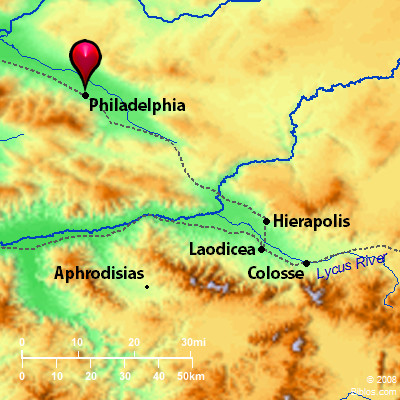

Philadelphia and surrounding area
Maps Created using Biblemapper 3.0
Additional data from OpenBible.info
Revelation 1:11 saying, " What you see, write in a book and send to the seven assemblies : to Ephesus, Smyrna, Pergamum, Thyatira, Sardis, Philadelphia, and to Laodicea."
Revelation 3:7 "To the angel of the assembly in Philadelphia write: "He who is holy, he who is true, he who has the key of David, he who opens and no one can shut, and who shuts and no one opens, says these things:
You are free to use up to 50 maps (small or large) for your website or presentation. Please credit Biblos.com. You may not redistribute or resell these materials. For additional permissions, contact us via the Biblos homepage.
|
|
|
|
|
|
|
|
EL SANTO GRIAL ESTA CODIFICADO EN EL DISEÑO DEL VATICANO EN FUNCION A LAS PLEYADES - EL MISMO DISEÑO DE ITALIA, EN EL MARCO AL PIE DE OPHIUCO, ES UNA REFERENCIA AL GOLDEN GATE ( ERA DE ACUARIO) - ULTRA SECRETO DEL "MISTERIO DE NUESTRA FE" DE LA MISA CATOLICA, EN EL MARCO AL 33

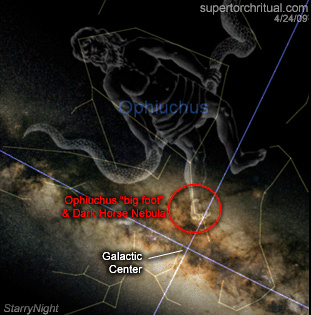
1 Pedro 5:13: La iglesia que está en Babilonia, elegida juntamente con vosotros, y Marcos mi HIJO, os saludan.
Versiculo que esta en clave. INTERRELACIONA BABILONIA (BABYLON EN INGLES-BABY ES BEBE) CON LA IGLESIA/MARIA MAGDALENA Y JUAN MARCOS. OBVIAMENTE PEDRO LE LLAMA "MI HIJO" EN UN CONTEXTO A QUE EL MISMO FUE HIJO DE NUESTRO SEÑOR JESUCRISTO Y MARIA MAGDALENA. ¿PORQUE EL FUERTE NEXO JUAN MARCOS CON PEDRO?
Mateo
16:1 Vinieron los fariseos y los saduceos para tentarle, y le pidieron que les mostrase señal del cielo.
16:2 Mas él respondiendo, les dijo: Cuando anochece, decís: Buen tiempo; porque el cielo tiene arreboles.
16:3 Y por la mañana: Hoy habrá tempestad; porque tiene arreboles el cielo nublado. ¡Hipócritas! que sabéis distinguir el aspecto del cielo, ¡mas las señales de los tiempos no podéis!
16:4 La generación mala y adúltera demanda señal; pero señal no le será dada, sino la señal del profeta Jonás. Y dejándolos, se fue.
16:5 Llegando sus discípulos al otro lado, se habían olvidado de traer pan.
16:6 Y Jesús les dijo: Mirad, guardaos de la levadura de los fariseos y de los saduceos. (¿fiesta de las levaduras? ¿Porque PEDRO APARECE A MARIA LA MADRE DE JUAN MARCOS EN CONTEXTO A LA FIESTA DE LAS LEVADURAS en contexto a HECHOS 12:12? ¿PORQUE JUAN MARCOS ES UN NEO-JONAS YA QUE NO FUE CON PABLO A MALTA en contexto a HECHOS 12, 13, 14 Y 15?)
16:7 Ellos pensaban dentro de sí, diciendo: Esto dice porque no trajimos pan.
16:8 Y entendiéndolo Jesús, les dijo: ¿Por qué pensáis dentro de vosotros, hombres de poca fe, que no tenéis pan?
16:9 ¿No entendéis aún, ni os acordáis de los cinco panes entre cinco mil hombres, y cuántas cestas recogisteis?
16:10 ¿Ni de los siete panes entre cuatro mil, y cuántas canastas recogisteis?
16:11 ¿Cómo es que no entendéis que no fue por el pan que os dije que os guardaseis de la levadura de los fariseos y de los saduceos?
16:12 Entonces entendieron que no les había dicho que se guardasen de la levadura del pan, sino de la doctrina de los fariseos y de los saduceos.
16:13 Viniendo Jesús a la región de Cesarea de Filipo, preguntó a sus discípulos, diciendo: ¿Quién dicen los hombres que es el Hijo del Hombre? (CESAREA DE PHI-LIPO ESTABA EN LA TRIBU DE DAN AL PIE DEL MONTE HERMON. DAN TIENE FUERTE NEXO CON LA VIUDA. EL CALENDARIO JULIANO NO FUE POR CASUALIDAD QUE DENOMINO A JULIO EL SEPTIMO MES Y EN FUNCION A LA ESTRELLA SIRIO. EL OJO OMNISCIENTE QUE APARECE EN LA PARTE SUPERIOR DE LA PIRAMIDE TRUNCADA SIMBOLIZA A SIRIO/UN OJO EN EL CIELO. EL CALENDARIO JULIANO-GREGORIANO DE ORIGEN EGIPCIO ESTA DISEÑADO EN FUNCION A LA ESTRELLA SIRIO. EL CALENDARIO DE NOE TENDRIA ESTE PATRON)
16:14 Ellos dijeron: Unos, Juan el Bautista; otros, Elías; y otros, Jeremías, o alguno de los profetas.
16:15 El les dijo: Y vosotros, ¿quién decís que soy yo?
16:16 Respondiendo Simón Pedro, dijo: Tú eres el Cristo, el Hijo del Dios viviente.
16:17 Entonces le respondió Jesús: Bienaventurado eres, Simón, hijo de Jonás, porque no te lo reveló carne ni sangre, sino mi Padre que está en los cielos. ("hijo de Jonas" tiene nexo con la "señal de Jonas")
16:18 Y yo también te digo, que tú eres Pedro, y sobre esta roca edificaré mi iglesia; y las puertas del Hades no prevalecerán contra ella. (NUMERO DE ORO) (MARIA MAGDALENA SIMBOLIZA A LA IGLESIA/NUEVA JERUSALEM. AQUI NUESTRO SEÑOR INDUDABLEMENTE BUSCA UN NEXO ESOTERICO CON SU ESPOSA Y EL GRIAL-S-OPHI-A/SABIDURIA-ONE EN EL BILLETE DE UN DOLAR ES UN ANAGRAMA DE NOE)
El Número de Oro; Phi; la Divina Proporción
16:19 Y a ti te daré las llaves del reino de los cielos; y todo lo que atares en la tierra será atado en los cielos; y todo lo que desatares en la tierra será desatado en los cielos.

GOLDEN GATE (PUERTA DE DIOS-PUERTA DE ORO)=21/22 DE DICIEMBRE
SILVER GATE (PUERTA DEL HOMBRE-PUERTA DE PLATA)=20 DE JUNIO
ARGENTUM (PUERTA DE PLATA)
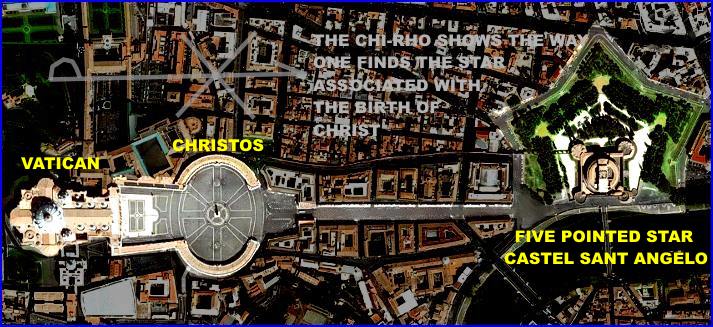
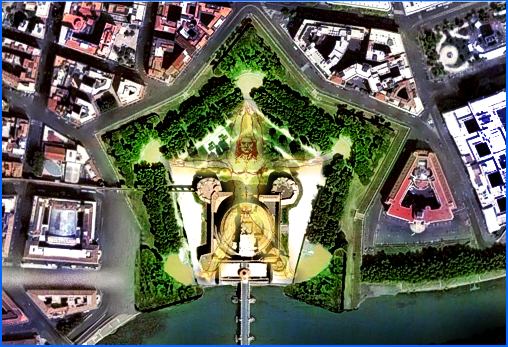 
El numero 5 en la Biblia es el numero de la gracia. Es el numero de la alquimia, la cuadratura del circulo simbolizada en la Biblia por la escalera de Jacob. En el mismo diseño del numero esta codificada en su parte superior el cuadrado y en su parte inferior el circulo. Concretamente en dicha cuadratura, esta la simbologia espiritual del SANTO GRIAL osea el linaje entre Nuestro Señor Jesucristo y Maria Magdalena. La gran piramide de Keop, construida con el mismo patron de la Nueva Jerusalen, esta diseñada en funcion a la CUBICACION DE UNA ESFERA en funcion al NUMERO DE ORO PHI=1.618033 Y AL MISMO NUMERO PI=3.14. DIOS MANEJA LA HISTORIA Y LA CIENCIA. LA LLAVE DE DAVID ESTA CODIFICADA EN APOCALIPSIS EN LA IGLESIA DE PHILADELPHIA, osea la sexta. PHI-LADEL-PHI-A (EN EGIPTO SIGNIFICABA UTERO DE ISIS) tambien era la ciudad de RABA/AMMAN que tenia 7 colinas al igual que la MISMA CIUDAD DE JERUSALEN (PLEYADES). OSEA QUE NUESTRO SEÑOR EN LA SEXTA IGLESIA DE APOCALIPSIS 3 (LAS SIETE IGLESIAS SON TAMBIEN LAS PLEYADES) HACE REFERENCIA A LA LLAVE DE DAVID.
2. Isaías 22:22: Y pondré la LLAVE de la casa de David sobre su hombro; y abrirá, y nadie cerrará; cerrará, y nadie abrirá.
3. Mateo 16:19: Y a ti te daré las LLAVEs del reino de los cielos; y todo lo que atares en la tierra será atado en los cielos; y todo lo que desatares en la tierra será desatado en los cielos.
6. Apocalipsis 3:7: Escribe al ángel de la iglesia en Filadelfia: Esto dice el Santo, el Verdadero, el que tiene la LLAVE de David, el que abre y ninguno cierra, y cierra y ninguno abre:
The seven stars are not mentioned again until Rev. 1:16, 1:20, 2:1, 3:1 as the seven churches in Asia
2 Samuel
12:1 Jehová envió a Natán a David;y viniendo a él, le dijo: Había dos hombres en una ciudad, el uno rico, y el otro pobre.
12:2 El rico tenía numerosas ovejas y vacas;
12:3 pero el pobre no tenía más que una sola corderita, que él había comprado y criado, y que había crecido con él y con sus hijos juntamente, comiendo de su bocado y bebiendo de su vaso, y durmiendo en su seno; y la tenía como a una hija.
12:4 Y vino uno de camino al hombre rico; y éste no quiso tomar de sus ovejas y de sus vacas, para guisar para el caminante que había venido a él, sino que tomó la oveja de aquel hombre pobre, y la preparó para aquel que había venido a él.
12:5 Entonces se encendió el furor de David en gran manera contra aquel hombre, y dijo a Natán: Vive Jehová, que el que tal hizo es digno de muerte.
12:6 Y debe pagar la cordera con cuatro tantos, porque hizo tal cosa, y no tuvo misericordia.
12:7 Entonces dijo Natán a David: Tú eres aquel hombre. Así ha dicho Jehová, Dios de Israel: Yo te ungí por rey sobre Israel, y te libré de la mano de Saúl,
12:8 y te di la casa de tu señor, y las mujeres de tu señor en tu seno; además te di la casa de Israel y de Judá; y si esto fuera poco, te habría añadido mucho más.
12:9 ¿Por qué, pues, tuviste en poco la palabra de Jehová, haciendo lo malo delante de sus ojos? A Urías heteo heriste a espada, y tomaste por mujer a su mujer, y a él lo mataste con la espada de los hijos de Amón.
12:10 Por lo cual ahora no se apartará jamás de tu casa la espada, por cuanto me menospreciaste, y tomaste la mujer de Urías heteo para que fuese tu mujer.
12:11 Así ha dicho Jehová: He aquí yo haré levantar el mal sobre ti de tu misma casa, y tomaré tus mujeres delante de tus ojos, y las daré a tu prójimo, el cual yacerá con tus mujeres a la vista del sol.
12:12 Porque tú lo hiciste en secreto; mas yo haré esto delante de todo Israel y a pleno sol.
12:20 Entonces David se levantó de la tierra, y se lavó y se ungió, y cambió sus ropas, y entró a la casa de Jehová, y adoró. Después vino a su casa, y pidió, y le pusieron pan, y comió.
12:21 Y le dijeron sus siervos: ¿Qué es esto que has hecho? Por el niño, viviendo aún, ayunabas y llorabas; y muerto él, te levantaste y comiste pan.
12:22 Y él respondió: Viviendo aún el niño, yo ayunaba y lloraba, diciendo: ¿Quién sabe si Dios tendrá compasión de mí, y vivirá el niño?
12:23 Mas ahora que ha muerto, ¿para qué he de ayunar? ¿Podré yo hacerle volver? Yo voy a él, mas él no volverá a mí.
12:24 Y consoló David a Betsabé su mujer, y llegándose a ella durmió con ella; y ella le dio a luz un hijo, y llamó su nombre Salomón, al cual amó Jehová, (SALOMON, ES TIPO DEL DISCIPULO AMADO, OSEA JUAN MARCOS, EL HIJO DE CRISTO Y MARIA MAGDALENA)
12:25 y envió un mensaje por medio de Natán profeta; así llamó su nombre Jedidías, a causa de Jehová.
12:26 Joab peleaba contra Rabá de los hijos de Amón, y tomó la ciudad real. (RABA/AMMAN es FILADELFIA perteneciente a DECAPOLIS despues de POMPEYO. FILADELFIA/PHI-LADEL-PHI-A ERA UNA CIUDAD QUE TENIA 7 COLINAS).
12:27 Entonces envió Joab mensajeros a David, diciendo: Yo he puesto sitio a Rabá, y he tomado la ciudad de las aguas.
12:28 Reúne, pues, ahora al pueblo que queda, y acampa contra la ciudad y tómala, no sea que tome yo la ciudad y sea llamada de mi nombre.
12:29 Y juntando David a todo el pueblo, fue contra Rabá, y combatió contra ella, y la tomó.
12:30 Y quitó la corona de la cabeza de su rey, la cual pesaba un talento de oro, y tenía piedras preciosas; y fue puesta sobre la cabeza de David. Y sacó muy grande botín de la ciudad.
 Los siete montes identifican a Jerusalén no Roma: Jerusalén era una ciudad grande extendida a fuera de los muros y cubría los siete montes presentes durante el tiempo de Jesús y los Apóstoles: 1.) Monte Gared; 2.) Monte Goat; 3.) Monte Acra; 4.) Monte Bezetha; 5.) Monte Moriah; 6.) Monte Ofel; 7.) Monte Sion. Por cualquier razón, y por cualquier manos y manipulación, el Mt. Gared, Mt. Goath, Los siete montes identifican a Jerusalén no Roma: Jerusalén era una ciudad grande extendida a fuera de los muros y cubría los siete montes presentes durante el tiempo de Jesús y los Apóstoles: 1.) Monte Gared; 2.) Monte Goat; 3.) Monte Acra; 4.) Monte Bezetha; 5.) Monte Moriah; 6.) Monte Ofel; 7.) Monte Sion. Por cualquier razón, y por cualquier manos y manipulación, el Mt. Gared, Mt. Goath,
|
1. Job 9:9: El hizo la Osa, el Orión y las Pléyades,Y los lugares secretos del sur;
2. Job 38:31: ¿Podrás tú atar los lazos de las Pléyades, O desatarás las ligaduras de Orión?
3. Amós 5:8: buscad al que hace las Pléyades y el Orión, y vuelve las tinieblas en mañana, y hace oscurecer el día como noche; el que llama a las aguas del mar, y las derrama sobre la faz de la tierra; Jehová es su nombre;
|
|
|
|
|
|
De: MachiV |
Enviado: 22/10/2014 23:19 |
TODO LO QUE HAS ESTADO APORTANDO ES FANTASTICO....ME ENCANTA SABER DE TODAS ESTAS COSAS.
MIL GRACIAS!
MACHI V |
|
|
|
|
|
De: MachiV |
Enviado: 22/10/2014 23:21 |
TODO LO QUE HAS ESTADO APORTANDO ES PARA MI FANTASTICO!
MIL GRACIAS POR HACERME PASAR RATOS TAN AGRADABLES Y EN DONDE APRENDO TANTAS COSAS.
MACHI V |
|
|
 Primer
Primer
 Anterior
2 a 6 de 21
Siguiente
Anterior
2 a 6 de 21
Siguiente Último
Último
|
|
| |
|
|
©2025 - Gabitos - Todos los derechos reservados | |
|
|

